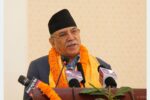WASHINGTON DC: The U.S. presidential campaign is culminating in a final sprint to the official Election Day on November 5, with Democratic Vice President Kamala Harris and her Republican opponent, former President Donald Trump, focused almost exclusively on seven political battleground states that most likely will determine the outcome.
More than 14 million people have already cast early ballots, according to the University of Florida’s Election Lab, and more will do so in the coming days as almost all the country’s 50 states open polling stations for early voting and to accept mail-in ballots.
National polls show the contest is among the closest in decades, with Harris holding a slight edge.
U.S. presidential elections are not decided by the national popular vote but rather through the Electoral College vote, which turns the election into 50 state-by-state contests, with 48 of the 50 states awarding all their electoral votes to the winner in their states, either Harris or Trump, while Nebraska and Maine allocate theirs by both state and congressional district vote counts.
The number of electoral votes in each state is based on population, so the biggest states hold the most sway in determining the overall national outcome, with the winner needing 270 of the 538 electoral votes to claim a new four-year term in the White House starting in January.
Polls show either Harris or Trump holds substantial or somewhat comfortable leads in 43 of the states.
Barring an upset in one of those states, that leaves the outcome to the remaining seven states – a northern tier of three states (Wisconsin, Michigan and Pennsylvania), two states in the Southeast (North Carolina and Georgia) and two in the Southwest (Arizona and Nevada).
Polling in the seven states is easily within the margins of statistical error, leaving the outcome in doubt in all seven.
(VOA)








Comment